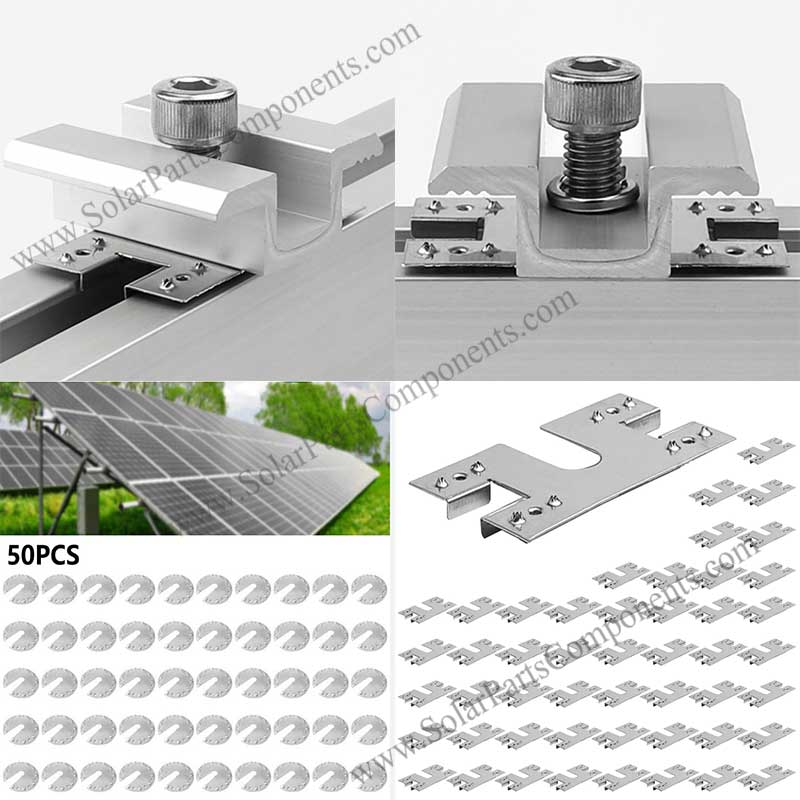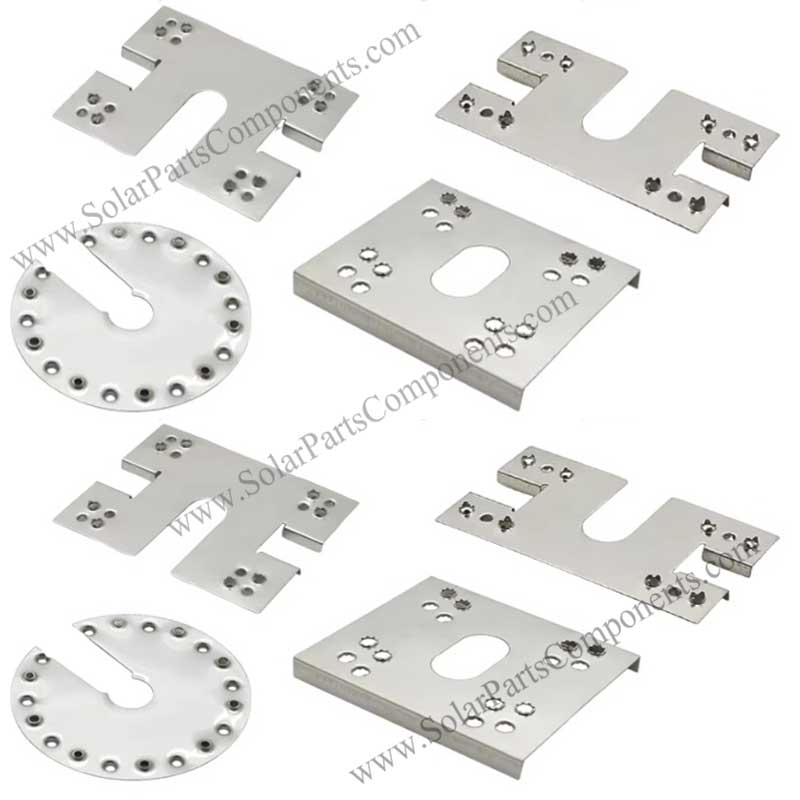There are many types of solar grounding clip.
This is because the development of solar cell technology and the application needs are constantly changing, and various types of PV module grounding clip have emerged to meet different performance and cost requirements.
The following explains this diversity from the aspects of technical requirements, material selection, design optimization and production cost:
- Different material selection
The main materials of PV module grounding clip are metals, such as copper and aluminum, but different materials have different conductivity, mechanical properties and costs.
For example, although copper conductive sheets have good conductivity, they are more expensive; aluminum conductive sheets are lighter and cheaper, but their conductivity is slightly inferior to copper.
Different projects and applications may have different emphasis on cost and performance, so solar grounding clip of different materials are needed to meet the needs.
- Requirements forPV module grounding clipdesign in different application scenarios
The application scenarios of solar cells are diverse, and different scenarios have different design requirements for solar grounding clip.
For example, in photovoltaic power stations, conductive sheets must take into account long-term corrosion resistance, while in building-integrated photovoltaic systems (BIPV), solar grounding clip need to minimize shading, and the design may require narrower solar grounding clip to improve aesthetics.
In summary, there are many types of PV module grounding clip because they must adapt to the rapidly developing solar cell technology and meet diverse application requirements.
Different materials, designs and production processes can help solar grounding clip achieve the best balance in terms of cost, current transmission efficiency, structural compatibility, etc., thus promoting the coexistence and continuous innovation of various types of solar grounding clip.









